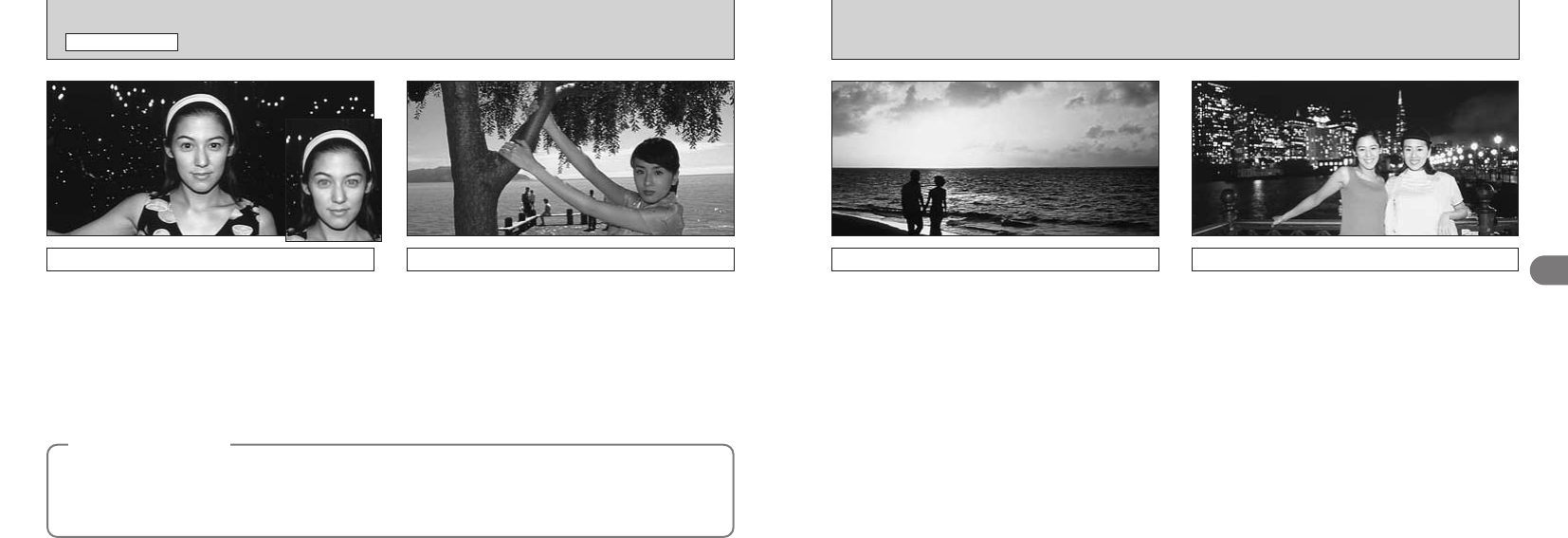
39
3
38
This is a flash mode that uses a slow shutter
speed. This allows you to take pictures of people
at night that clearly show both your subjects and
the night time backdrop.
v
Slow Synchro
●
!
The image may be overexposed when you shoot
bright scenes.
●
!
Because a slow shutter speed is used, a tripod
should be used to prevent camera shake.
b
Suppressed Flash
Use this mode for photography using indoor
lighting, for shots taken through glass, and for
photography in venues such as theaters or at
indoor sporting events where the distance is too
great for the flash to be effective. When you use
Suppressed Flash, the Automatic White Balance
function (➡P.111) operates so that natural colors
are captured along with the ambience of the
available light.
●
!
If you are shooting in Suppressed Flash mode in dark
conditions, use a tripod to prevent camera shake.
●
!
See P.106 for information on the camera shake
warning.
c FLASH
PHOTOGRAPHY MENU
n
Red-Eye Reduction
Use this mode to ensure that the subject’s eyes
appear natural when photographing people in
low-light conditions. The flash fires automatically
as required by the photography conditions.
The flash fires a pre-flash just before the picture is
taken and then fires again to take the actual picture.
c
Forced Flash
Use this mode to photograph backlit scenes,
such as a subject against a window or in the
shade of a tree, or to obtain the correct colors
when you are shooting under lighting such as
fluorescent tubes. In this mode, the flash fires in
bright as well as dark conditions.
●
!
You cannot use this setting in Macro (close-up)
photography.
◆
Red-Eye Effect
◆
When you use the flash to photograph people in low-light conditions, their eyes sometimes appear red in
the picture. This is caused by the light of the flash reflecting off the inside of the eye. Use Red-Eye
Reduction flash to effectively minimize the likelihood of the red-eye effect.
Take the following measures also to make Red-Eye Reduction more effective:
●
Get the subjects to look at the camera.
●
Get as close as possible to the subjects.


















